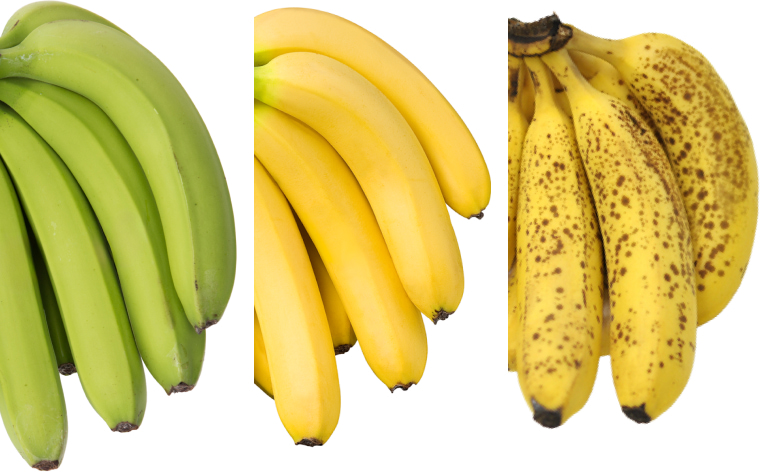Bana Navi
Banana Trivia
-
How to split a banana in two with your hands
If one banana is too much or if you want to share it with someone else, try splitting it into two in one swift motion and you'll actually find it splits very nicely.
It is easier to do this if you make a small cut in the banana with your nails. However, this technique may not work if your banana is overly ripe.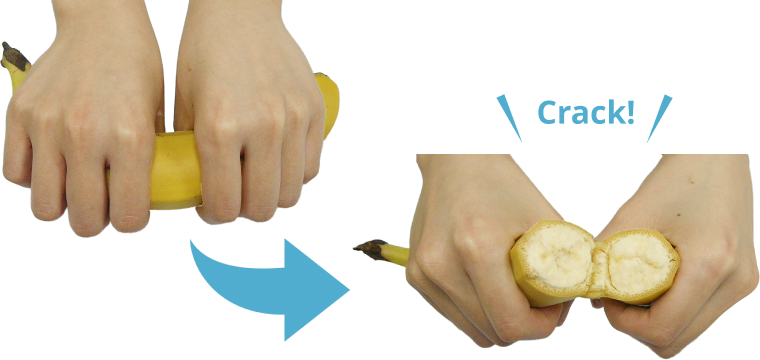
-
A banana's peak ripeness
As bananas ripen, brown spots called sugar spots form on the skin. The greater the number of sugar spots, the sweeter the banana. So that bananas are delivered to consumers at peak ripeness, their coloring is controlled by using the temperature and humidity level most appropriate for their condition. People have different sweetness preferences, so try and find out what level of ripeness matches your taste. Just be careful not to let them get overly ripe!
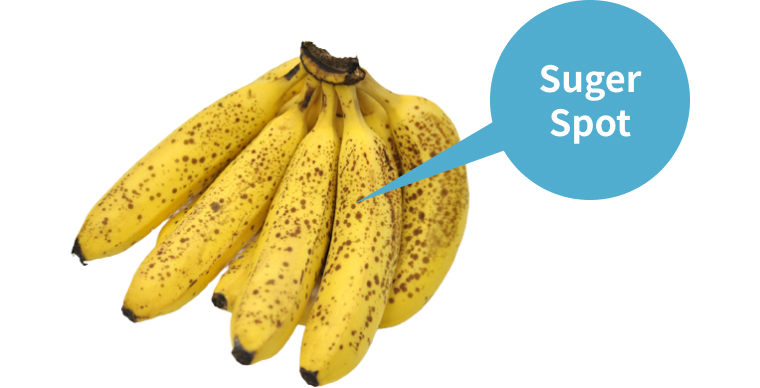
-
Coloring bananas
The banana fruit does not grow in the yellow color we are familiar with. Bananas become yellow at special ripening facilities (chambers) in which temperature, carbon dioxide levels, and humidity are controlled, and in which ethylene gas (a type of plant hormone) is used to accelerate the ripening process. Ripening is computer-controlled, but since final outcomes differ depending on the temperature and humidity on the day, we rely on the judgment of experts at the chambers, with their many years of experience and skills, to bring the right coloring to the bananas in accordance with consumer needs.

-
How to best store bananas
Bananas are easily damaged by impact and pressure. If they are placed directly onto a table, stress is placed on the side in contact with the table, making that part of the fruit soft and brown.
To prevent this from happening, we recommend purchasing a banana hanger, something that can be commonly found at stores and that also acts a decorative element. Be aware that ripe bananas can tear and fall from the hanger, so make sure to eat them before this happens!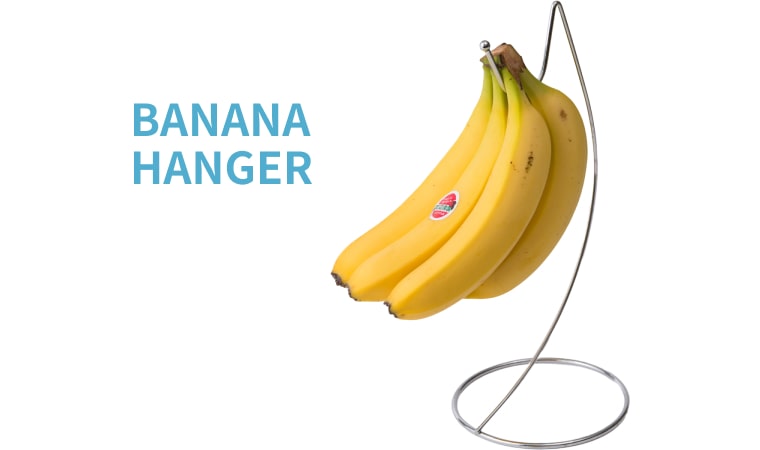
-
Recommended items for carrying bananas
When you want to bring bananas with you on outdoor excursions, hiking and the like, simply tossing them into your bag could squeeze or crush them, meaning they may get damaged and blackened. This is why we recommend that you take them with you in a specially made banana case. You'll find a wide variety of these sold at the stores, such as hard or soft varieties in different colors and designs. They are as widely available as banana hangers, so try searching for a case with a design you like to enhance your eating experience.
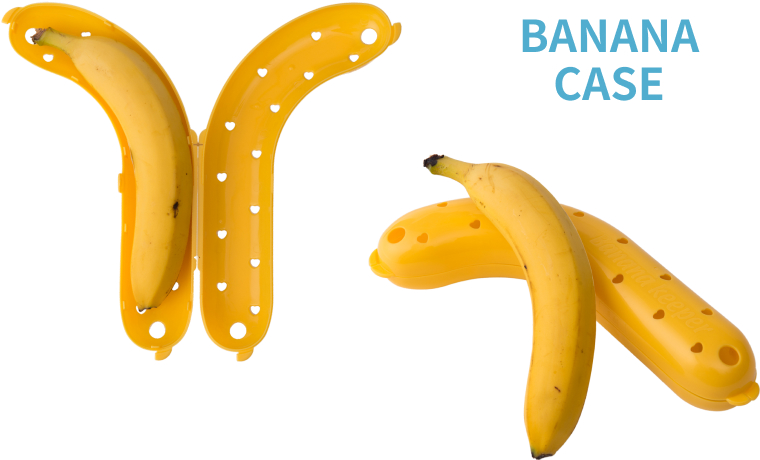
-
Storage temperature for bananas
The ideal environment is a place that has good ventilation and that is away from direct sunlight. The temperature should be between 15 and 20°C. Bananas will ripen more quickly at higher temperatures; however, if it is too high, the skin may break or the fruit may soften rapidly. On the other hand, if the temperature is too low, it will stop the banana from ripening and the skin will blacken. This is damage by low temperature, and in the industry we say would that the banana "has caught a cold." If you wish to eat your banana chilled, wrap it in newspaper or other such material to prevent it from being directly subjected to chilled air, and place it in the refrigerator about two hours before you plan to eat it. If you cannot finish the entire banana, take all the skin off, wrap it in plastic wrap, and store it in the freezer.
-
Popular bananas in the Philippines
In Japan, a popular type of banana is the Cavendish. Meanwhile, the most popular variety of banana in the Philippines, a country that harvests bananas, is the Lakatan. These bananas are characterized by their slight tang, and are shorter and thicker than the Cavendish. There is also the Cardava, which is a type of cooking banana normally enjoyed grilled or fried and topped with sugar, honey, or fruit sauce. It may not be easy to differentiate the various types by sight alone, so please try comparing these different types when you have the chance.
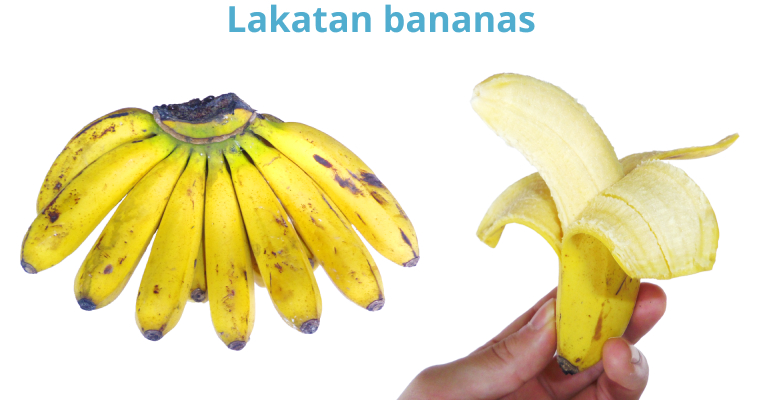
-
The strings and the black part of the fruit
The end of the banana (where the flower once was) closes up very firmly after being fertilized, and includes large quantities of a substance called tannin. Bananas can become black to their core after being subject to a strong impact. Tannin is a type of polyphenol also found in teas, so there is no harm in eating it. The area around the core of the fruit or part of the fruit may also become black due to external pressure or vibrations that the banana was subject to during packaging or transport. In this case, the cell walls of the fruit are damaged, creating a phenomenon where the tannin reacts with oxidative enzyme to cause blackening.
-
Grime on the skin surface
There are times when there is brown grime on the banana skin, and this is due to latex (lactescent) oozing out from when the banana was cut. This latex attaches itself to the surface of the skin, so there is no problem in eating the banana. It may be sticky, however, so be careful not to get it on your clothes!
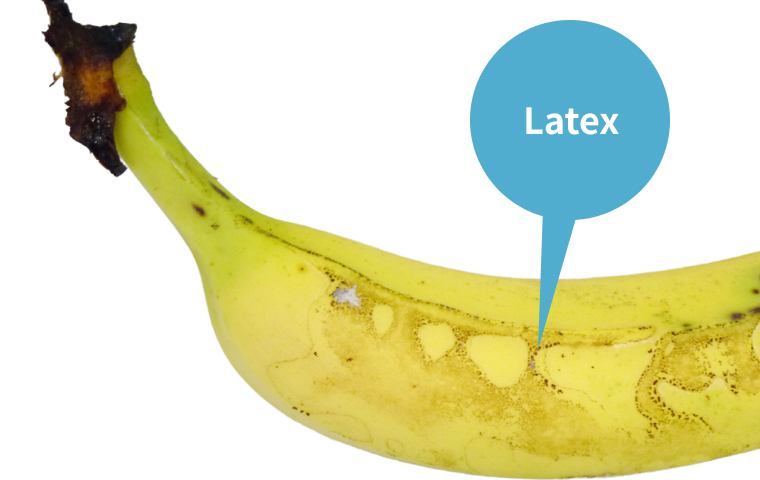
-
Bananas and athletes
Bananas can be eaten quickly and easily during practice or match breaks and do not need to be chilled, making them a perfect, tasty item for athletes who do not want their body to cool down. Carbohydrate is a nutrient that provides energy to the muscles and brain, and bananas contain two types of carbohydrates—those that turn into energy immediately after consumption, and those that turn into energy gradually over time.
Moreover, bananas are rich in the vitamin B group essential in turning sugars into energy, making it an ideal food for athletes who need a continuous supply of energy for their muscles. Bananas are also rich in minerals, which we lose when we sweat. -
Bananas are also great for students!
The brain relies mostly on glucose for energy. This is supplied either through the consumption of glucose itself or by breaking down various sugars and carbohydrates within the body. The carbohydrates (sugars) in bananas include those with different digestion absorption time—those that turn into glucose quickly, and those for which this takes some time. Therefore, bananas can provide a continuous supply of energy to the brain, and this is why they are an effective means of staying energized during your studies.
-
Bananas and dieting
Bananas may appear to be high in calories, but they are actually rather low at about 86 kcal per 100 grams of edible fruit. Meanwhile, 100 grams of rice is 168 kcal, so one bowl of rice (polished white rice) is equal to roughly two bananas. Bananas can be consumed easily but are highly nutritious and also make us feel full, thus making them a good choice for those trying to stick to a diet. They also contain dietary fibers and oligosaccharide, which help to relieve constipation.
(Japan Standard Food Composition Table, 2010)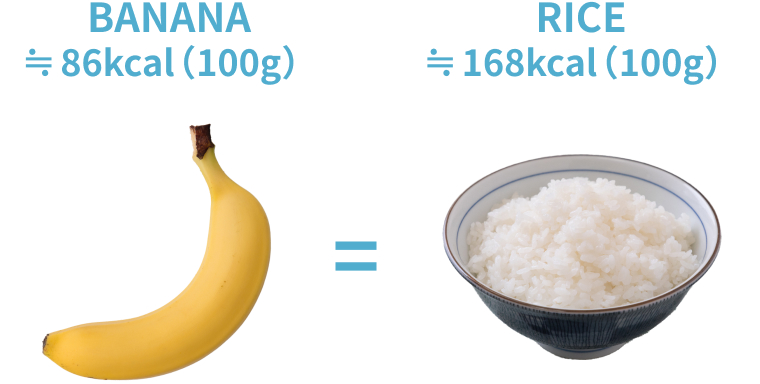
-
The benefits of bananas and cancer prevention
Bananas are not only rich in nutrients such as vitamins, dietary fiber, and magnesium, but are also said to have high antioxidant effects. They help prevent the excess production of reactive oxygen when we breathe, thus aiding in the prevention of arteriosclerosis and cancer. Among fruit that is readily available to consumers, it has also been found that bananas have the highest ability to enhance our immune strength, thereby further aiding in cancer prevention by boosting the body's immunity levels.
-
Different color, different benefits?!
You probably know that bananas go from green to yellow and then to brown.
However, did you know that their benefits also differ by color? You may not have even seen a green banana, much less have eaten one. Let's now look at benefits by color, starting with green bananas.Green: These bananas help with the improvement of intestinal regulation. They contain a lot of resistant starch, which is said to have similar benefits to dietary fiber.
Yellow: These bananas is said to have anti-aging effects. They contain vitamin B2 and niacin, essential in the energy metabolism of fat, sugar and protein within the body, as well as vitamin B6, which is known as a beauty vitamin. They have more of these vitamins compared to other bananas, with the added advantage of letting you consume such vitamins simultaneously in a well-balanced manner.
Brown: These bananas are said to boost immunity. In particular, those with sugar spots include phospholipids seldom found in other fruit, and have been confirmed in experiments with mice to have a high surfactant effect and potentially protect the gastric mucosa. Furthermore, experiments with rats have shown that mixing bananas with milk helps to further enhance this protection.
Green bananas, ripe bananas—they both have beneficial effects. Try eating bananas in their different stages depending on what benefits you want to see!
